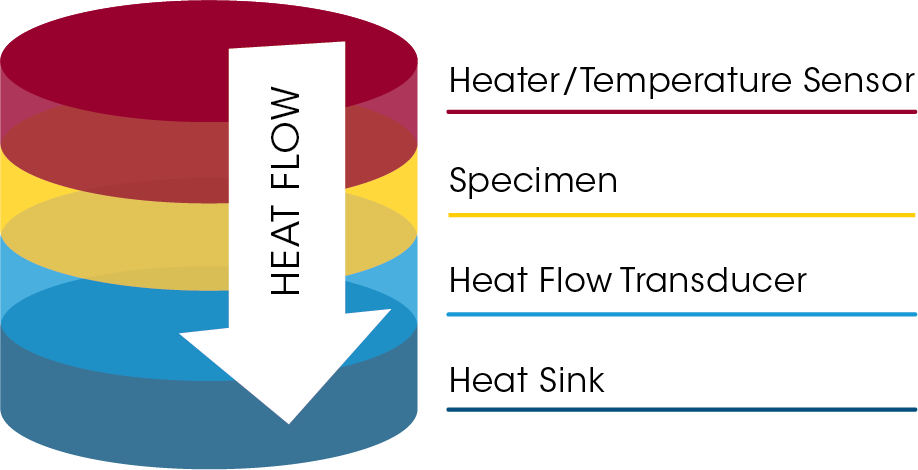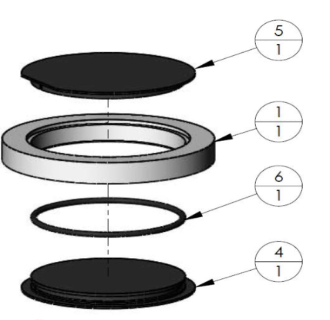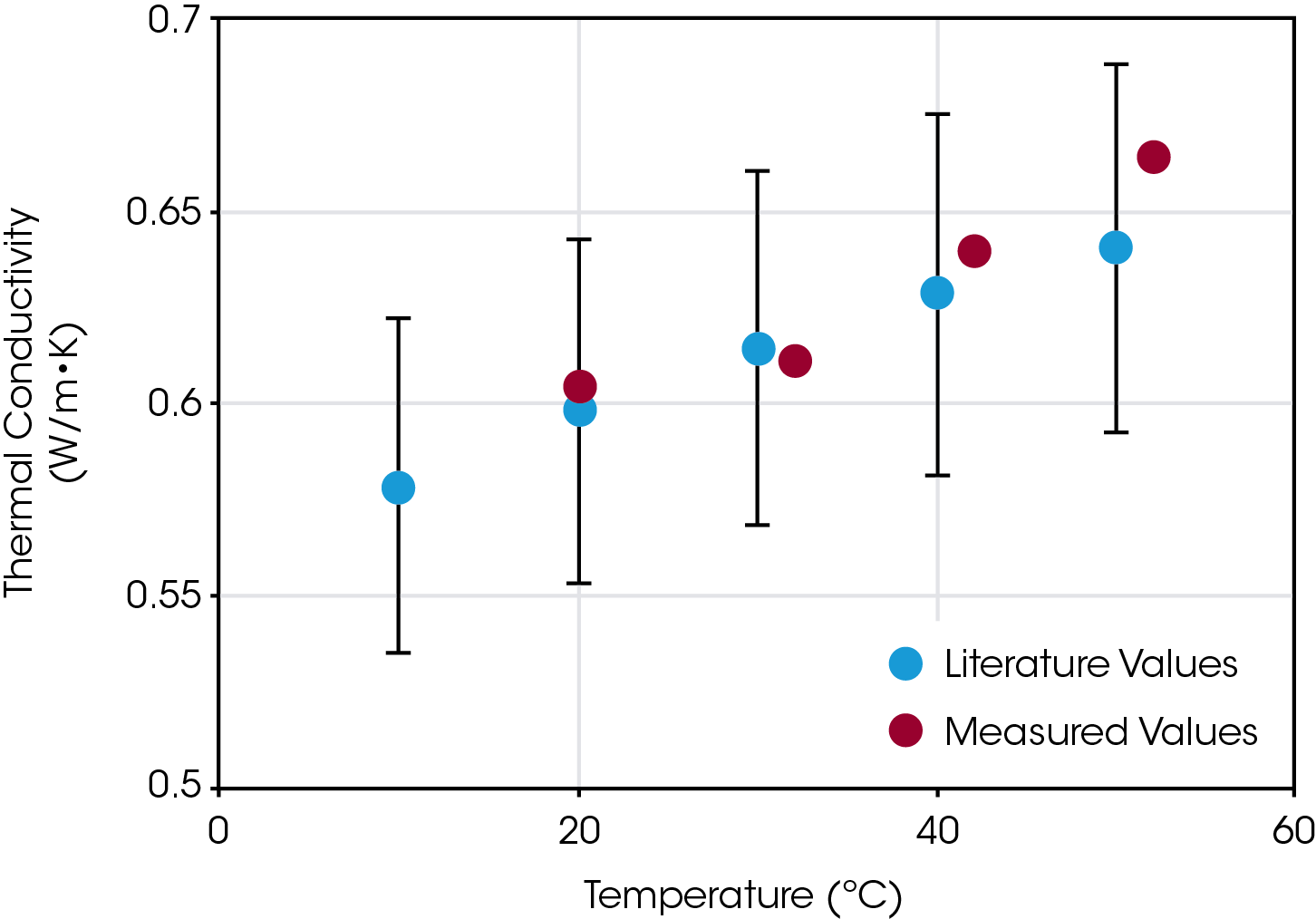Keywords: liquid cell, Heat Flow Meter Method, thermal conductivity
TPP033
Background
The thermal properties of liquids can be determined through the Heat Flow Meter Method. This is achieved with the DTC-300 instrument, a General Purpose Heat Flow Meter. Though a ‘standard’ sample tested via HFM is a solid disc of varying thickness, the implementation of an optional test cell allows for liquids to be tested as well, provided that they are in the range of 0.1 – 1.0 W/m·K.
The construction of the cell is paramount to the liquid being measured properly, after which the instrument can be operated under similar principles as a standard disc sample.
Heat Flow Meter Method
The Guarded Heat Flow Meter Method is a steady state test, in which heat is passed in a uniaxial path through a slab of material and reference calorimeter section to create a thermal gradient in the specimen and calorimeter section.
A sample of material is held under a compressive load between two polished metal surfaces, each controlled at a different temperature. The lower surface is part of a calibrated heat flux transducer. Heat flows from the upper surface through the sample to the lower surface and an axial temperature gradient is established in the stack. By measuring the temperature difference across the sample along with the output from the heat flux transducer, and combined with a known thickness, thermal conductivity of the sample can then be determined. A guard furnace surrounds the test stack to reduce the effect of heat transfer and lateral heat loss across the edges of the sample (which would cause error in measurement). Calibration is required over the thermal resistance range, and the method is limited by the interfacial resistance between the specimen and the instrument, as well as the available specimen thickness.

where Q is the amount of heat passing through a cross section of A and causing a temperature difference of ΔT over a thickness of ΔL.

Liquid Cell Assembly
The Liquid Cell fixture for the DTC-300 is comprised of 4 parts. It has 2 anodized aluminum plates, a Teflon ring, and a single rubber O-ring. The assembly is shown here:
The O-ring is fashioned around the bottom plate to limit leaking and to keep the Teflon ring in place during testing. The liquid fills the inside space and the top plate (which has a built-in lip) seals in the liquid during testing. Calibrations are performed that include the cell parts, which allow for the direct measurement of the liquid inside.

Testing Results & Conclusions
| Testing Conditions | |
|---|---|
| Temperature Range | 10 – 50°C |
| Sample | Distilled Water |
| Sample Size | 52mm diameter; 3.5mm thick |
We see that the testing results follow the literature results extremely well. Though we used a cell that is positioned so that the liquid does not touch the instrument plates directly, a calibration of the instrument that includes the cell allows the outputted thermal conductivity values to be only that of the liquid inside the cell.

Acknowledgement
This paper was written by Justin Wynn, Applications Support Engineer at TA Instruments.
Click here to download the printable version of this application note.

